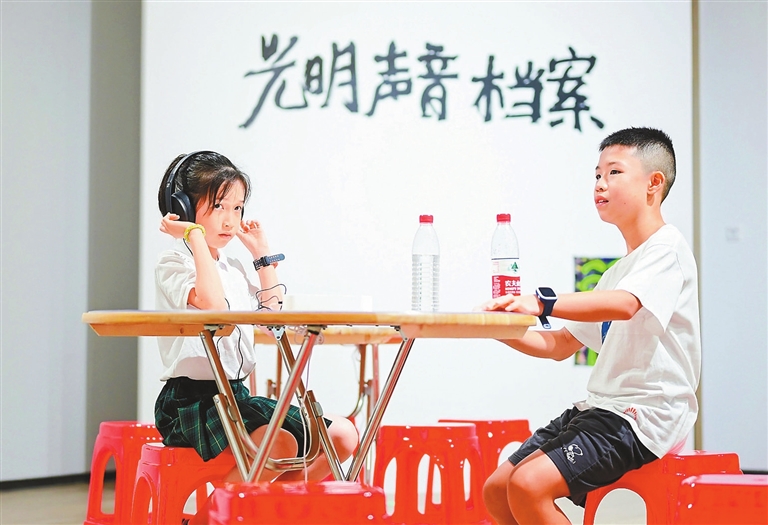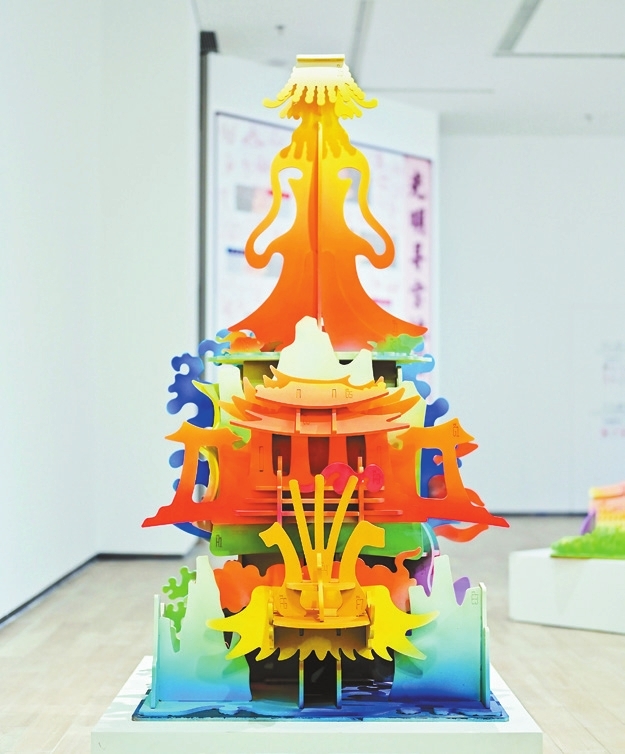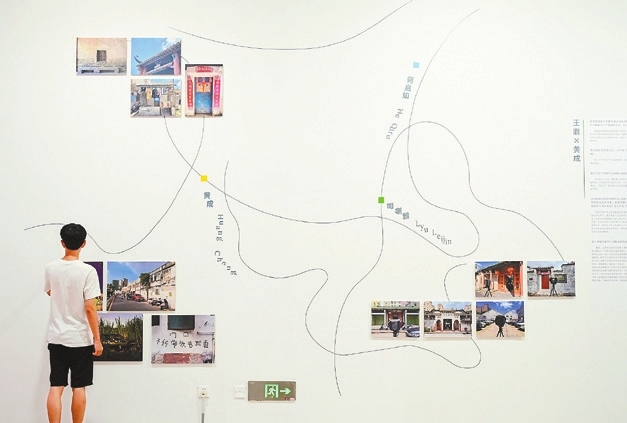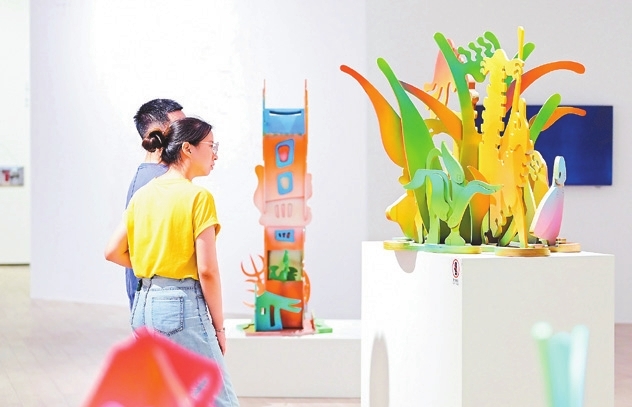



Debra Li debra_lidan@163.com WHEN discussing Guangming District, most people immediately think of its dairy farm that produces fresh milk and roast squab, a famed local delicacy. However, this land holds much more to be explored — an entanglement of old and new that manifests as a rich cultural tapestry. Currently, an exhibition titled “Guangming Project” is inviting the visitors to explore the district’s history and future vision through sound archives, installations and photographs. The works by three young resident artists are on display at the Art Museum, Guangming Culture and Art Center through Sept. 25. Huang Cheng, a native of Northeast China, transitioned from sculpture to sound art in 2015. His fascination with sound led him on a journey across various locations. His previous works spotlighted such urban villages as Baishizhou, Hubei and Caiwuwei, where he recorded the sounds of bustling life and construction sites before those areas were renovated and transformed into high-rise buildings. For the current project, he visited 31 communities, interviewing local residents and recording their renditions of folk songs and children’s rhymes. The project materialized as four CDs each placed in a CD player atop a round table, reminiscent of street-side restaurants, for the audience to listen to. Two albums feature local folk songs; a third consists of Hakka folk songs and still another contains recordings of folk songs created by overseas Chinese who returned from Vietnam in the late 1970s. “The project is part art creation and part anthropological field work,” Huang said. “While it is currently 2023, individuals in various locations might still live a lifestyle reminiscent of bygone eras. This folk song collecting experience demonstrated that the past can unexpectedly intersect with modern life,” he said. Huang had intended to record complete performances by individual singers, but ended up with singing snippets intertwined with conversations and background sounds. “When I visited the overseas Chinese who returned from Vietnam, the grannies would sing out their answers to my questions, turning the interview into a sort of live musical performance. … The process is brimming with delightful surprises,” he said. Huang discovered that the local folk songs could be broadly categorized into three groups. There were work songs sung during activities such as tea-picking; another category encompassed wedding songs, often about a sad daughter leaving her parents for the unknown; the final category consisted of funeral songs, singing of wishes for a peaceful afterlife. “The revelation that Shenzhen, a migratory city, harbored its own aboriginal population with unique traditions may be unexpected for many. When the grannies, in their 70s or older, began to sing a long-forgotten piece, I could see their faces light up with joyful memories. This also allowed others in the community to rediscover their own cultural heritage.” He Qiru, a local female artist with a background in architecture and design research, presents nine abstract installations that are complex 3D jigsaw puzzles. A graduate of the Central Saint Martins, University of the Arts London, she intends for her work to dismantle the stereotypes about Guangming and offer a vibrant and engaging interpretation of the place that will resonate with the young. “After interviewing local people and some field research, I collected 80 distinctive elements to be represented in my installations,” she said. One impressive piece represents the Baihua Gun Tower, a century-old historical building. The wood panels were intricately carved into images of the façade of the gun tower, Qing Dynasty (1644-1911) armor, a pine tree and other things before being installed together into a complex abstract piece, and sprayed with pigments in eye-pleasing orange, blue, green and other hues. The artist also created an installation representing the Tianhou Temple hidden in the mountains of Baihuadong Village, a historical site relatively unknown even among the locals. The structure whose top part resembles a silhouette of the sea goddess the temple enshrines features a lot of details, including the ocean waves and legendary sea creatures associated with Matsu worship. The exhibit titled “Guangming Memory Puzzle” also showcases such aspects of the district as its lion and dragon dances, history of immigration, a juxtaposition of modern and old architecture and its vision to become a science and tech hub. Lyu Leijin, a photographer, used a Sinar 5X7 view camera and vintage lenses to capture the old architecture buried among new buildings in Guangming. His photographs offer a deliberate focus on often overlooked details: ornate eaves, intricately engraved doors, and lanterns adorning family temples during special occasions. Developed from negatives in a darkroom by the artist himself, these photos represent a fitting way to preserve snippets of a living history. The exhibition by Beijing-based independent curator Wang Che will reach out to audiences with lectures and workshops. During one session, attendees will have the opportunity to assemble miniature 3D jigsaw puzzles, adding their own color and personal drawings to these creations. | 
